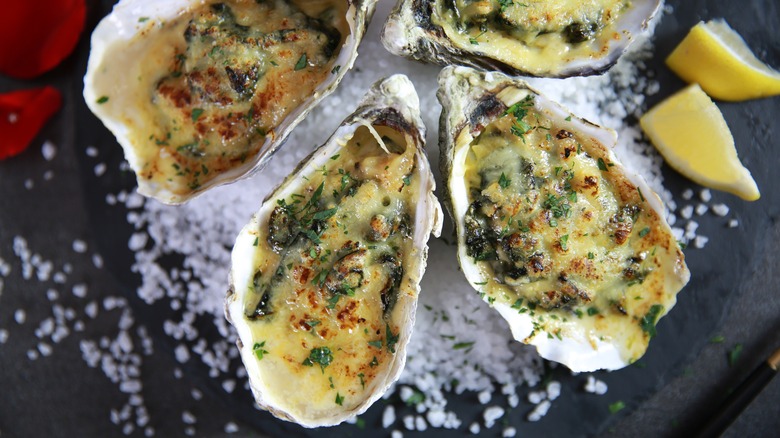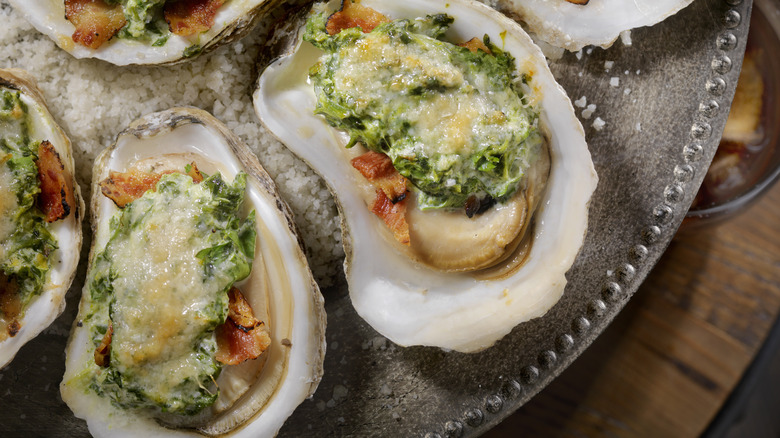The Ingredients That Differentiate Oysters Bienville From Oysters Rockefeller
When you think of oysters, chances are the first thing you're going to think of is raw oysters on the half shell. That makes sense; raw oysters are a classic, and there's a reason they've remained popular for so long. But if you like the taste of oysters but can't handle the raw texture — or if you just want to mix things up from time to time — there are other ways to eat oysters that bring their own positives to the table — case in point: Oysters Rockefeller and oysters Bienville.
Both oysters Rockefeller and Bienville are oysters mixed with other ingredients and baked to perfection, but that's where the similarities end. The only other ingredient the two share is breadcrumbs, which are designed to act as a binder. Beyond that, oysters Rockefeller features spinach, while oysters Bienville sees a savory combination of bacon, shrimp, and mushrooms.
Oysters Rockefeller involves spinach, while oysters Bienville involves a lot more stuff
Oysters Rockefeller are the better-known of the two dishes, and some of that might have to do with their universality. In addition to the obvious oysters and breadcrumbs, they're made from a mixture of cheeses, creams, and the key ingredient: spinach. That last ingredient is how they get their name: They're named in honor of John D. Rockefeller, the 19th-century robber baron known for his immense wealth. The green of the spinach is said to represent the color of money (and the richness of the dish correlates to the richness of Rockefeller).
While there are different recipes for oysters Bienville, they're universally made from a much more complicated sauce consisting of bacon, mushrooms, shrimp, and a similar cheese/butter/cream mixture. Things like ham, sherry, onions, garlic, and parsley are optional but very common. Thus, they bring a much more complex, savory flavor than oysters Rockefeller.
Both are native to New Orleans
Neither of these dishes is remotely recent, though the two have very different origin stories — despite both hailing from the same place and maybe even the same restaurant. New Orleans is the home of some incredible seafood dishes, and it produced both of these. Oysters Rockefeller was created because of a snail shortage. In 1889, the city dealt with a shortage of escargot — an unacceptable state of affairs for late 19th-century fine diners. A chef at a restaurant called Antoine's (theorized to be the owner's son) came up with similarly textured oysters as a substitute, and the rest is history.
Meanwhile, oysters Bienville was created sometime in the early 1900s, and we're not sure who made it first. There are competing claims from Antoine's and another New Orleans restaurant called Arnaud's. The only thing people seem to agree on is that it's named after the man who founded New Orleans in 1718: Jean-Baptiste Le Moyne, Sieur de Bienville.
Regardless of which you enjoy, both oysters Rockefeller and oysters Bienville bring a lot to dinner. They're both decadent seafood dishes — it's just a matter of whether you want Rockefeller's classic spinach-y richness or Bienville's savory taste explosion.


